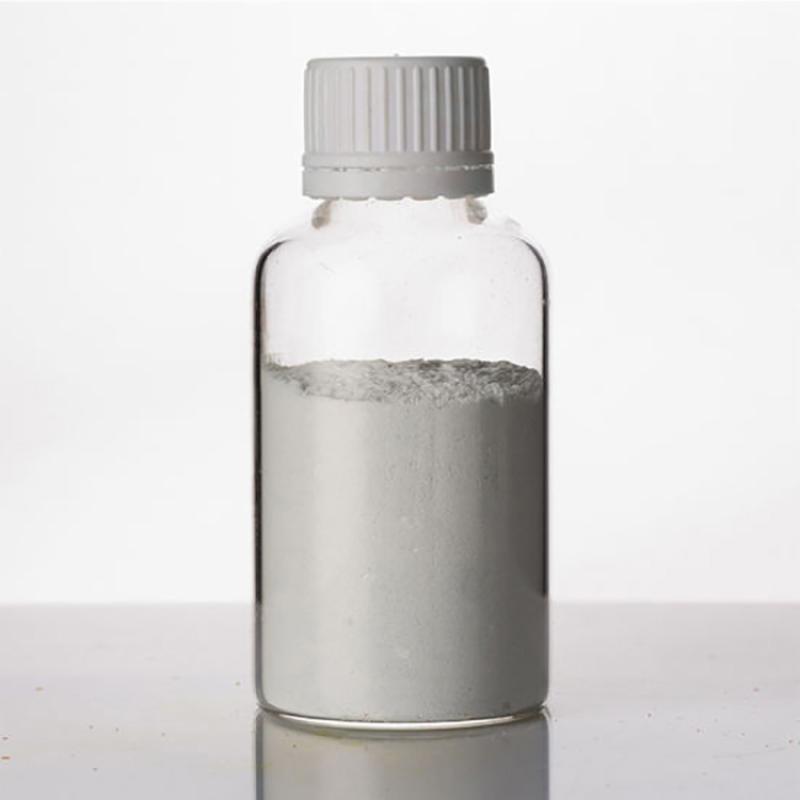Common name: EpoxiconazoleChemical name:1-[[3-(2-chlorophenyl)-2-(4-fluorophenyl)oxiran-2-yl]methyl]-1,2,4-triazole Molecular formula: C17H13ClFN3OStructural formula: Molecular weight: 329.76CAS No. : 135319-73-2Product description: Epoxiconazole is a fungicide active ingredient from the class of azoles developed to protect crops. In particular, the substance inhibits the metabolism of fungi cells infesting useful plants, and thereby prevents the growth of the mycelia (fungal cells). Epoxiconazole also limits the production of conidia (mitospores).
Contact Now
Common name: MethomylChemical name:Methylthio-1-ethylidenamino methylcarbamateMolecular formula: C5H10N2O2SStructural formula: Molecular weight: 162.21CAS No. : 16752-77-5Product description:Internal carbamate insecticide, both pesticide and stomach toxicity, can effectively control a variety of pests and their larvae and eggs, the residual effect is short. Control cotton bollworm, cotton miner moth, tobacco moth with 24% water spray 24-36ml /100m2.
Contact Now
Chlorfenapyr is converted into active substances (insecticidal interest) by multifunctional oxidases in bugs. note: multifunctional oxidase mainly performs an critical role inside the interpretation of pyrethroids, organophosphorus and macrolides.Common name: CHLORFENAPYRChemical name: 4-bromo-2-(4-chlorophenyl)-1-ethoxymethyl-5-trifluoromethylpyrrole-3-carbonitrile Molecular formula: C15H11BrClF3N2OStructural formula:Molecular weight: 407.61CAS No. : 122453-73-0Physical and chemical properties:Pure white solid. M.p.
Contact Now
Product description:Internal carbamate insecticide, both pesticide and stomach toxicity, can successfully manipulate a ramification of pests and their larvae and eggs, the residual impact is brief. manipulate cotton bollworm, cotton miner moth, tobacco moth with 24% water spray 24-36ml /100m2. foliar spray also can be used to manipulate aphids, thrips, red spider, leaf roll worms, slime worms, and so on., and soil remedy to control nematodes and leaf pests. in 1966, it changed into first endorsed by way of du pont as insecticide and nematocide.
Contact Now
Product description:Lufenuron is the active factor inside the veterinary flea manage remedy application, and one of the energetic elements in the flea, heartworm, ringworm and anthelmintic medicine milbemycin oxime/lufenuron (sentinel).Lufenuron is stored within the animal's body fats and transferred to adult fleas via the host's blood when they feed. adult fleas switch it to their growing eggs via their blood, and to hatched larvae feeding on their excrement.
Contact Now
Common name: AzoxystrobinChemical name: Methyl(2E)-2-(2-{[6-(2-cyanophenoxy)pyrimidin-4-yl]oxy}phenyl)-3-methoxyprop-2-enoateMolecular formula: C22H17N3O5Structural formula: Molecular weight: 403.39CAS No. : 131860-33-8Physical and chemical properties:Appearance White crystalline solidUsage:Azoxystrobin is a xylem-mobile systemic fungicide with translaminar, protectant and curative properties. In cereal crops, its main outlet, the length of disease control is generally about four to six weeks during the period of active stem elongation.
Contact Now
Product description:Epoxiconazole is a fungicide active element from the magnificence of azoles evolved to defend vegetation. especially, the substance inhibits the metabolism of fungi cells infesting beneficial plants, and thereby prevents the growth of the mycelia (fungal cells). epoxiconazole also limits the producing of conidia (mitospores). epoxiconazole become introduced to the marketplace thru basf se in 1993 and can be located in many products and product mixtures concentrated on a large wide form of pathogens in various plant life.
Contact Now
Structural formula:Molecular weight: 419.9CAS No. : 51630-58-1Product description:Fenvalerate is a synthetic pyrethroid insecticide. It is a mixture of four optical isomers which have different insecticidal activities. The 2-S alpha (or SS) configuration, known as esfenvalerate, is the most insecticidally active isomer. Fenvalerate consists of about 23% of this isomer.Fenvalerate is an insecticide of moderate mammalian toxicity. In laboratory animals, central nervous system toxicity is observed following acute or short-term exposure.
Contact Now
Product description:Fenvalerate is a synthetic pyrethroid insecticide. it is a aggregate of 4 optical isomers that have one-of-a-kind insecticidal sports. the 2-s alpha (or ss) configuration, referred to as esfenvalerate, is the maximum insecticidally lively isomer. fenvalerate includes about 23% of this isomer.Fenvalerate is an insecticide of moderate mammalian toxicity. In laboratory animals, central nervous system toxicity is observed following acute or short-term exposure.
Contact Now
Thiamethoxam is a extensive-spectrum, systemic insecticide, which means that it's miles absorbed speedy with the resource of plant life and transported to all of its components, which includes pollen, in which it acts to discourage insect feeding.[citation needed] an insect can absorb it in its belly after feeding, or via direct contact, which includes thru its tracheal device.
Contact Now
Product description:Imidacloprid is a systemic insecticide belonging to a category of chemicals referred to as the neonicotinoids which act on the significant apprehensive system of bugs. the chemical works via interfering with the transmission of stimuli in the insect nervous machine. in particular, it causes a blockage of the nicotinergic neuronal pathway. by blockading nicotinic acetylcholine receptors, imidacloprid prevents acetylcholine from transmitting impulses between nerves, ensuing inside the insect's paralysis and eventual death.
Contact Now
Physical and chemical properties:The pure product is a white solid. m.p.230℃ (decomposition). it's miles infrequently soluble in wellknown organic solvents; its solubility in water is 1.2% at 25°c. normally made into glyphosate amine salt, consisting of isopropylamine salt, dimethylamine salt, and so on., can also be made into sodium salt. the glyphosate salt is soluble in water.Common name: GlyphosateChemical name: N-(Phosphonomethyl)glycineMolecular formula: C3H8NO5PStructural formula:Molecular weight: 169.07CAS No.
Contact Now
Common name: FenpropathrinChemical name: [cyano-(3-phenoxyphenyl)methyl] 2,2,3,3-tetramethylcyclopropane-1-carboxylateMolecular formula: C22H23NO3 Structural formula:Molecular weight: 349.42CAS No. : 39515-41-8 Product description:Fenpropathrin, or fenopropathrin, is a widely used pyrethroid insecticide in agriculture and household. Fenpropathrin is an ingestion and contact synthetic pyrethroid.
Contact Now
Product description:it can kill mites and bugs, but now not eggs. the mechanism of movement is different from the overall insecticide is to intrude with neurophysiological sports, stimulate the discharge of γ -aminobutyric acid, and aminobutyric acid on arthropod nerve conduction inhibition. person mites, nymphs and insect larvae display paralysis after touch with avermectin, do not circulate or feed, and die in 2 ~ 4 days. the lethal effect of abamectin is slow as it does not cause speedy dehydration of insects.
Contact Now
Usage:Profenofos can be used on a spread of plants which includes cotton and veggies inclusive of maize, potato, soybean, and sugar beet. inside the usa it's far used exclusively on cotton and is more often than not used against lepidopteran bugs.Combined with phoxim, cypermethrin, beta-cypermethrin imidacloprid and deltamethrin, profenofos may be used in opposition to cotton mealybug, cabbage caterpillar, plutella xylostella and asparagus caterpillars, as well as in opposition to wheat and cabbage aphids.Structural formula:Molecular weight: 373.63CAS No.
Contact Now
Structural formula:Molecular weight: 249.67CAS No.
Contact Now
Usage:Chlorpyrifos is used in approximately one hundred nations round the world to manipulate insects in agricultural, residential, and business settings. its use in residential packages is limited in more than one international locations. in step with dow, chlorpyrifos is registered for use in nearly one hundred nations and is yearly carried out to approximately eight.five million crop acres. the crops with the maximum use consist of cotton, corn, almonds, and fruit trees, consisting of oranges, bananas, and apples.
Contact Now
Common name: AcetamipridChemical name: N-[(6-chloro-3-pyridyl)methyl]-N'-cyano-N-methyl-acetamidineMolecular formula: C10H11ClN4Structural formula:Molecular weight: 222.67CAS No. : 135410-20-7Physical and chemical properties:Acetamiprid raw drug is white crystal, content of more than 99%, melting point of 101 ~ 103.3℃, vapor pressure < 0.33×10-6Pa(25℃), slightly soluble in water, solubility in water is 4.2g/L, soluble in acetone, methanol, ethanol, dichloromethane, chloroform, acetonitrile, etc.
Contact Now
Structural formula:· Molecular weight: 255.66· CAS No. : 105827-78-9Physical and chemical properties:Pure product is white crystal, M.P. 143.8℃ (A), 136.4℃ (B), vapor pressure 2×10-7Pa (20℃)Specifications:97%TC, 25%WP, 10%WP, 70%WP, 35%SC, 60%FCProduct description:Imidacloprid is a systemic insecticide belonging to a class of chemicals called the neonicotinoids which act on the central nervous system of insects. The chemical works by interfering with the transmission of stimuli in the insect nervous system.
Contact Now
Usage:Pyrethroid is a tactile, gastrotoxic pyrethroid insecticide. used to control pests on cotton, veggies, tobacco and other crops.Chemical name: (1R,3R)-3-((Z)-2-Chloro-3,3,3-trifluoro-propenyl)-2,2-dimethyl-cyclopropanecarboxylic acid (S)-cyano-(3-phenoxy-phenyl)-methyl esterMolecular formula: C23H19ClF3NO3Structural formula:Molecular weight: 449.85CAS No. : 91465-08-6Physical and chemical properties:Pure product is white solid, industrial product is light yellow solid.
Contact Now
Common name: GlufosinateChemical name: 2-Amino-4-[hydroxy(methylphosphonoyl)]butanoic acidMolecular formula: C5H18N3O4PStructural formula:Molecular weight: 215.19CAS No. : 77182-82-2Product description:Glufosinate-ammonium, also known as glufosinate, is a non-selective foliar spray of organophosphorus herbicide. It was first synthesized and developed by the Federal German Hoechst Chemical Company in 1979.
Contact Now
Glufosinate is a wide-spectrum herbicide that is used to govern essential weeds consisting of morning glories, hemp sesbania (sesbania bispinosa), pennsylvania smartweed (polygonum pensylvanicum) and yellow nutsedge just like glyphosate.
Contact Now
It is moderately toxic to humans and animals, has no irritating effect on rabbit skin, has mild irritating effect on eyes, and is highly toxic to aquatic organisms, bees and silkworms. High insecticidal activity, is a nerve agent, pyrethroid insecticides. It is mainly used for contact killing and stomach poisoning, and has a certain repelling effect, without systemic suction and fumigation. Binding effect, long lasting effect, able to withstand rainwater leaching.
Contact Now
Common name: ProchlorazChemical name: N-propyl-N-[2-(2,4,6-trichlorophenoxy)ethyl]-1H-imidazole-1-carboxamideMolecular formula: C15H16Cl3N3O2Structural formula:Molecular weight: 376.67CAS No. : 67747-09-5Product description:Prochloraz, also known as Promethazine, Promethazine, Shibaoke, and Prochloraz, is an imidazole broad-spectrum pesticide fungicide, which acts by inhibiting the biosynthesis of sterols. Although it does not have a systemic effect, it has certain conductivity properties.
Contact Now

































